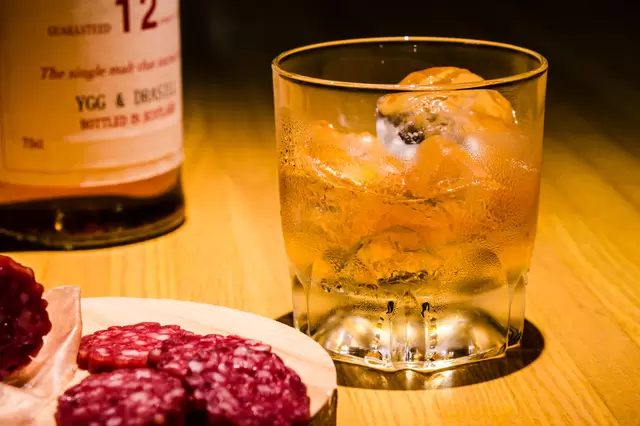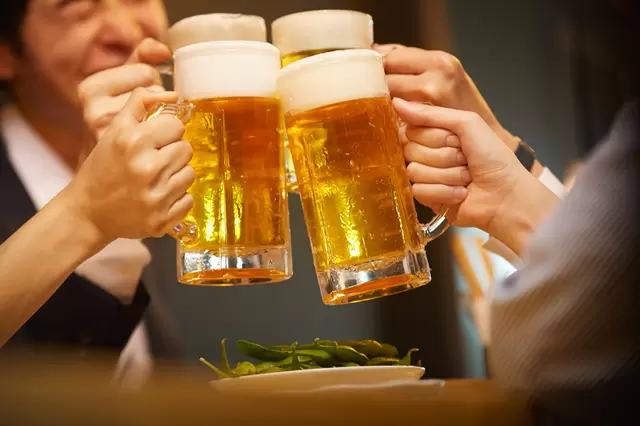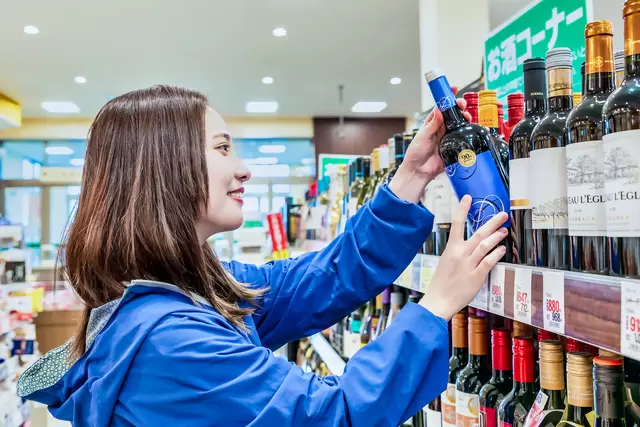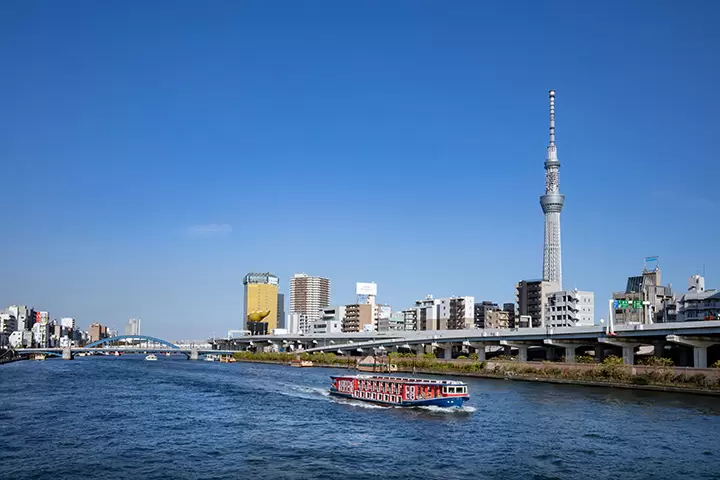Japanese Alcoholic Beverages: From Sake To Wine

Would you like to try Japanese alcoholic beverages? Find out what are the differences between the many varieties of alcohol that can be enjoyed in Japan - sake, shochu, beer, wine and more, as well as where you can find them!
Kinds of Alcohol You Can Purchase and Drink in Japan
In Japan, you can procure all sorts of alcoholic beverages, including sake derived from rice, beer, wine, whiskey, and more.
You can buy alcohol at more places than just liquor stores; you can also find the drinks you are looking for at nearby supermarkets and even in convenience stores.
The drink menus at izakayas, which serve alcohol, include beverages like sake, shochu and chu-hai.
For people who like to drink, Japan has a plethora of alcoholic beverages to try.
Japanese Sake

Alcohol percentage:10~20%
Japan’s representative alcoholic drink is rice wine, better known overseas as sake. It’s said that sake goes very well with sushi and sashimi. Made of rice, white yeast and water, sake can be enjoyed warm, cold, or at room temperature.
Some kinds of sake are not manufactured by major companies, but locally produced by brewers across Japan. These kinds of sake, called ji-zake, all have their own characteristic flavors and aromas. In this way, there is an abundance of sake varieties. Depending on the brewing method, sake can be classified as junmai sake or honjozo sake. Read on to find out the differences between them.
Junmai Sake
Junmai sake is made only from rice, and the personality and flavor of that rice is what stands out. Unlike other sake, which contains brewer's alcohol, rice is the only main ingredient in junmai sake, which is why it’s said that people don’t get sick when they drink it.
Honjozo Sake
Honjozo sake contains added brewer’s alcohol, which gives it a cost advantage over junmai sake. For sake lovers, honjozo sake is like table wine for everyday consumption.
Ji-zake
Sake produced not by major manufacturers, but by small brewers, is called ji-zake. Ji-zake is made using water and rice sourced from the brewer’s local area, so each ji-zake variety has its own flavor. When you head into the Japanese countryside, it would be a good idea to drop by the region’s brewery and sample their ji-zake.
Nigori-zake
Nigori-zake refers to cloudy white sake.
Ordinarily sake is strained after undergoing fermentation, which gives the sake its smooth taste and clarity. Nigori-zake omits this step, resulting in sake with a creamy taste and a slight sourness.
Special Sake Containers
When enjoying sake, people drink it out of special cups.
Tokkuri
A tokkuri is a sake decanter which can hold anywhere from 180 mL to 360 mL of sake. Most people fill the tokkuri up with warmed sake before pouring a small amount into a little ochoko cup, then drinking.
Ochoko Cups
Ochoko are little sake cups. Since sake is strong, it’s best to drink a little at a time. For that reason, ochoko have a capacity of up to 20 mL, just right for one mouthful.
Guinomi
Guinomi are also sake cups. They don’t have a specifically-defined capacity, but they are larger than ochoko. Guinomi means “to gulp down a lot.” Sake lovers in Japan prefer to use guinomi.
Champagne and Wine Glasses, too
Nowadays, the number of people who drink sake out of wine or champagne glasses has been increasing.
Shochu

Alcohol content: 25~40%
Shochu rivals sake for its historical longevity as an alcoholic beverage enjoyed in Japan. Shochu differs from sake in that it is not brewed from fermented rice, but distilled from rice, barley, buckwheat, or potatoes. It is stronger than sake, containing 25%-40% alcohol, so many people dilute shochu with water, tea or juice before drinking it.
Awamori
Alcohol content: 25~40%
Awamori, a variety of Okinawan shochu made from rice, is exceptionally popular as a souvenir from Okinawa.
Chu-hai
Chu-hai is a catch-all term used to refer to a drink made with shochu, diluted with tea, juice or something other than water such as green tea or oolong tea. Fruit-flavored chu-hai drinks, like the lemon chu-hai or lemon sour - shochu mixed with soda water and lemon juice - are beloved in Japan.
Many chu-hai drinks are sold in cans, which can be found at any convenience store or supermarket.
Whiskey

A bottle of Japanese whiskey is a popular souvenir to bring back home. Famous and well-regarded whiskey brands include Suntory’s Yamazaki, Shirasu, and Hibiki.
Whatever bottle you choose, it’s sure to leave an impression with its appearance and design sense. Japanese whiskey is a great gift for the men in your life.
The highball is a popular drink in Japan, made from whiskey diluted with soda. Highballs are refreshing and easy to drink. They are sold in cans, and you can also get them at izakayas and restaurants.
Beer

From Stave Off The Summer Heat At Five Tokyo Beer Gardens!
Alcohol content: 4~5.5%
Beer is one of the more relatively popular alcoholic beverages in Japan, with a great variety available from major brewers like Asahi, Kirin, and Sapporo.
If you’re interested in more information about the major beers in Japan, read the following article.
Japanese Craft Beer
Most beers in Japan from major manufacturers are Pilsner-style beers with clear tastes.
On the other hand, the craft beer lineups developed at small-scale breweries is quite varied, with artisan brewers producing all sorts of fragrant ales and other kinds of beer.
Many craft beer breweries also have a history as sake and shochu producers, so they have the advantage of being able to create beer that is high quality, has depth of flavor, and pairs well with Japanese food.
Happoshu and Third-Category Beer
Happoshu and third-category beer are alcoholic beverages that taste like beer, but are made with less malt, which makes them cheaper than actual beer.
Japanese regulations dictate that only beverages that have more than 67% malt content are beer. Alcoholic beverages with less than that, or which do not use malt, are called third-category beer.
Beer Gardens
Appearing in the summertime on department store roofs and other outdoor spaces, beer gardens are large restaurants that offer beer, snacks and meat. Many beer gardens offer all-you-can-eat-and-drink for a set rate, so customers can enjoy themselves fully without worrying about the tab.
If you’re interested in more information about beer gardens in Japan, read the following article.
Hoppy
From Traditional Japanese Flavor – How To Drink Hoppy
Hoppy is a drink specifically made for mixing with sake. Most of the time, people dilute shochu with Hoppy and drink it. While it tastes like beer, it has low sugar content, so it is lower in calories. You can also use it to adjust the alcohol content of your drink, and its carbonation is less harsh compared to soda water, so we recommend Hoppy for when you want to relax and enjoy your food at your own pace.
Hoppy is not commonly found at restaurants, but you can try it at izakayas.
Wine

Alcohol content: 3~5%
In recent years, wine’s popularity has risen to the point that wine is now produced in various regions across Japan. The main wine producers are Hokkaido, Yamagata, Nagano and Yamanashi.
While Cabernet Sauvignon, Merlot, Pinot Noir, and Chardonnay grape breeds are used in Japanese wines, there has also been a progression of wines that are being produced using Japan-specific grape breeds: Muscat Bailey A, Kai Noir, and Koshu.
Many Japanese wines have delicate and gentle flavors, so they’re easy to pair with Japanese food.
Umeshu and Other Fruit Liqueurs

From How To Choose Alcohol At Convenience Stores
We recommend fruit liqueurs for light drinkers. There are sake varieties flavored with plums, citrons, apricots, mandarin oranges and all sorts of other fruit liqueurs. These liqueurs make the best use of their characteristic fruits, with sweetness and unique tastes.
Just like shochu and whiskey, people drink these fruit liqueurs on the rocks, or diluted with water or soda.
Non-Alcoholic Beverages
In recent years, more and more non-alcoholic beverages for people who are concerned about being healthy have been appearing on the market, and non-alcoholic versions of beverages like beer, chu-hai, cocktails, and plum sake are all available for purchase.
The Drinking Age and Manners
It’s easy to buy alcohol in Japan; what’s more, there are no restrictions on public drinking, which is very different from other countries.
When you drink at izakayas and restaurants, it’s good manners to avoid making others uncomfortable. When drinking with Japanese people, stay respectful to make your get-together even more enjoyable.
You should also be aware of Japan’s strict laws about alcohol, especially with regard to drunk driving.
Japan’s Drinking Age is 20
You must be over 20 to drink alcohol in Japan. When you buy alcohol from convenience stores or supermarkets, you may be asked for ID if you look younger than 20.
Manners When Drinking with Japanese People
The Japanese idea about drinking in groups is that you’re not just there to enjoy yourself, but to take care of the people around you, too.
First, if someone who’s your senior has an empty glass, refill it for them to show respect. Someone may also refill your glass for you. When you accept the refill, hold your glass with both hands to be polite.
Read this article for more information about drinking manners in Japan.
Drunk Driving Is Strictly Prohibited
You will have to pay a fine of 500,000 yen to 1,000,000 yen if caught driving while intoxicated. Take a taxi or public transportation when going home after a night out.
Also read:
Special Edition: How To Select The Best Shōchū, Sake and Whisky
How To Choose Alcohol At Convenience Stores
Too Much Beer Foam? Differences Between Japanese and Non-Japanese Beer
All pictures from PIXTA



































![[Just a short distance from Nagoya] Popular Taiwanese YouTuber Alan tours Aichi, Tokoname!](https://resources.matcha-jp.com/resize/720x2000/2026/01/08-255181.webp)
